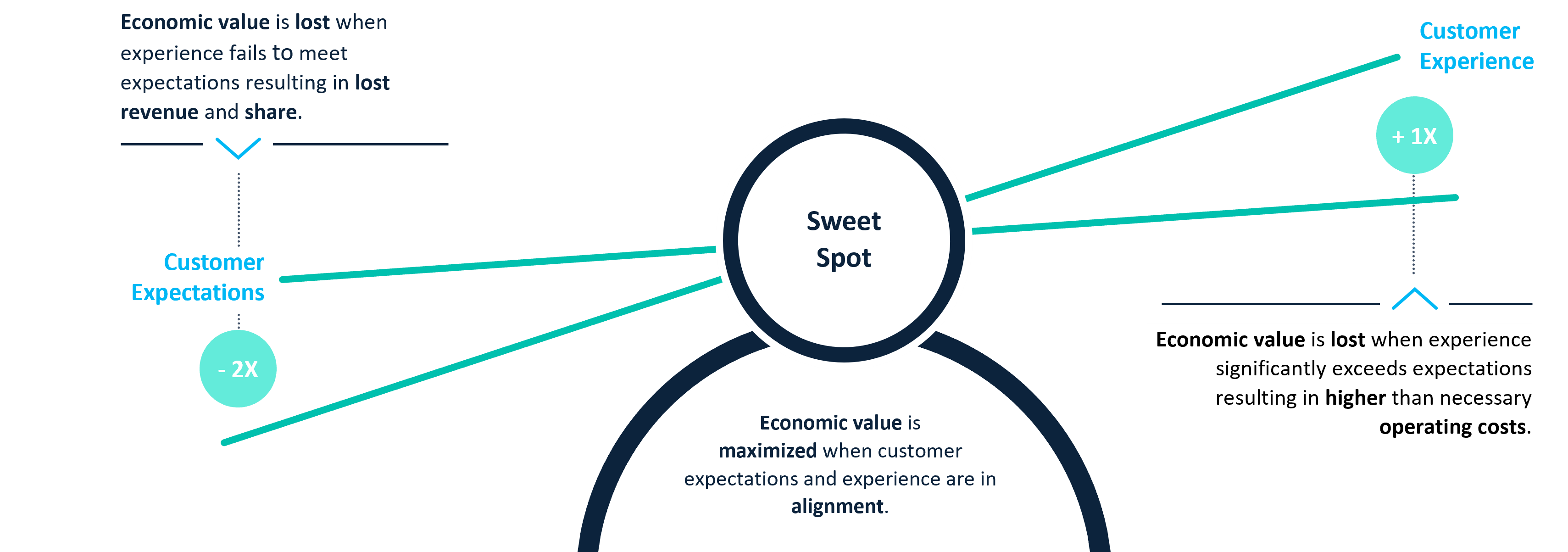“4 in 10 VoC and CX measurement programs fail to measure the effectiveness and efficiency of their own program. VoC and CX leaders can’t count on their organizations continuing to fund these programs if they don't show value. Faced with economic headwinds, CX teams need to focus on showing ROI now more than ever.” 1
The link between an organization’s investment in customer experience (CX) and financial performance has been challenging to document and often ignored as companies seek to grow only on core CX metrics like NPS or CSAT. However, CX needs to be more than a point of differentiation: it needs to be a source of profitability and demonstrate return on investment.
Organizations need to invest in CX to find the “sweet spot” where experience delivered meets expectations. Underdelivering on CX causes organizations to lose market share and revenue. Overdelivering on CX results in organizations losing economic value due to inefficient investments.
A CX Economics model can help an organization find the optimal investment levels and quantify the expected return on investment for CX initiatives. This will help drive CX programs to the next level and will build momentum and alignment behind CX across the organization.




